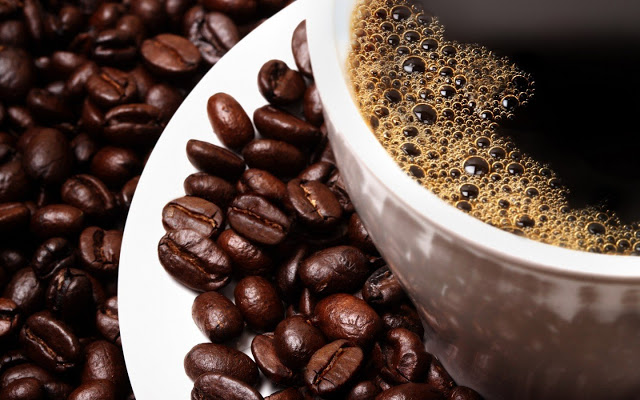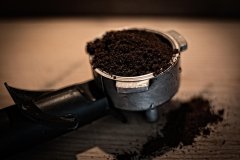The Development of Coffee: from Instant to Fine Coffee

Professional barista communication, please pay attention to coffee workshop (Weixin Official Accounts cafe_style )
When you step into a cafe, most of the names printed on the menu are Italian names such as "latte", as if Italy is the source of coffee. I still remember when I was a child, I went to Ice Room Tea Restaurant with my elders. The names we heard most often were "frozen lemon coffee" and "fast coffee". If I asked the local old man what "cappuccino" was, he would probably be confused!
Two generations, two kinds of understanding, when did this generation gap start? From the first coffee houses in the 16th century to the mid-20th century, coffee was drunk only for religion, caffeine, or the unique social and cultural flavor of coffee houses, and so on for hundreds of years. But in the decades since World War II, there has been a dramatic shift in the taste of coffee.
European families used to go to the market for groceries, mostly including raw coffee beans. Bake a small amount each week, self-sufficient. But the rise of the industrial revolution made instant coffee packaging fashionable for big business. Fresh baked, ground and ready to go? Culture is gradually forgotten. The so-called first wave of coffee was the mass-produced and cheap stuff that used to be drunk in ice houses and cafes. It had no quality at all, so it had to be mixed with milk and sugar to temper the bitterness.
Coffee = Italian
The second wave of Italian coffee originated after World War II. European immigrants revived the roasting process in the United States, using the advanced technology of the time, the espresso machine, to make espresso at high temperatures and pressures. The Starbucks chain later swept the United States and even the world to draw the "coffee and Italian" equal sign. Say coffee to young people nowadays, and most of them will think of milk bubbles (commonly known as pull flowers) presenting different patterns on coffee. This is the product of the previous wave.
Grandma's method is the best
Actually? To make good coffee, you don't need any electronic machinery, just a pot of hot water and a funnel. A foreign guest once said,"This is clearly my grandmother's ancient way of making coffee!" How can it be high-grade?" The emphasis of the third wave is precisely to fight against mechanization and craftsmanship. A cup of coffee used to be charred, ground into powder and boiled in boiling water. What is done now contains scientific data and the precipitation of contemporary taste aesthetics. Different from Italian coffee with milk foam, fine coffee pursues regional style, without adding, endless changes.
Recently, someone asked the author,"Will there be a fourth wave in the future?" My response was that we should first find out what level we should use to define a wave. If so? Boiling and extraction technology to define, in fact, since 2010, it has been proposed to transform? The pressure profile is a mechanical breakthrough to explain the arrival of the fourth wave.
However, from a distant point of view, the breakthrough of science and technology is actually inseparable from the boundaries of taste. The third wave of coffee has tapped into the chemical potential of the little fruit itself, from caffeine pick-me-up to the present through processes such as planting, processing, roasting and extraction. This wave just witnessed the appreciation and taste of nature by mankind.
Written by Patrick Tam
(Boutique coffee shop Knockbox owner, American Boutique Barista Association, European Boutique Barista Association accredited barista, American CQI accredited cup tester, Cup of Excellence first Hong Kong judge)
Important Notice :
前街咖啡 FrontStreet Coffee has moved to new addredd:
FrontStreet Coffee Address: 315,Donghua East Road,GuangZhou
Tel:020 38364473
- Prev

Why is freshly ground coffee as fragrant as opening a bottle of champagne?
For professional baristas, please pay attention to the coffee brewed in the coffee workshop (official Wechat account cafe_style), which is better than the coffee made in the distiller for half a day; the taste of the freshly fried beans is longer than that that has been on the shelf for half a year. The charm of coffee lies not only in the taste, but also in the more than 800 aromas produced by roasting. Real experience of the 2007 World Barista Competition Champion, in the UK
- Next

The Development of Coffee: from Instant to Fine Coffee
For the exchange of professional baristas, please follow the coffee shop (official Wechat account cafe_style). Most of the menu is printed with Italian names such as latte, as if Italy is the source of coffee. I still remember that when we went to the Ice Room Tea Restaurant with our elders when we were young, the names we most often heard were frozen lemonade and fast caffeine. If you ask the local old man what cappuccino is, he will probably be confused!
Related
- Beginners will see the "Coffee pull flower" guide!
- What is the difference between ice blog purified milk and ordinary milk coffee?
- Why is the Philippines the largest producer of crops in Liberia?
- For coffee extraction, should the fine powder be retained?
- How does extracted espresso fill pressed powder? How much strength does it take to press the powder?
- How to make jasmine cold extract coffee? Is the jasmine + latte good?
- Will this little toy really make the coffee taste better? How does Lily Drip affect coffee extraction?
- Will the action of slapping the filter cup also affect coffee extraction?
- What's the difference between powder-to-water ratio and powder-to-liquid ratio?
- What is the Ethiopian local species? What does it have to do with Heirloom native species?

